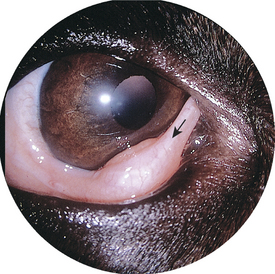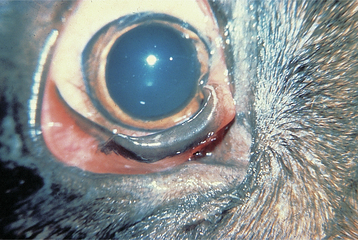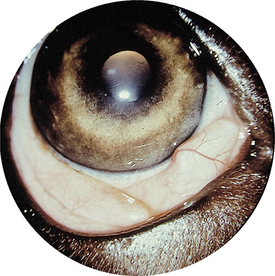Chapter 3 Third Eyelid
INTRODUCTION

Figure 3-3 Scrolled nictitans. In dogs with a scrolled nictitans the third eyelid cannot be repositioned manually, in contrast to those with a cherry eye (prolapsed gland of the third eyelid; see Figure 3-4), which can be repositioned, at least temporarily.
Only gold members can continue reading. Log In or Register to continue
Stay updated, free articles. Join our Telegram channel

Full access? Get Clinical Tree




